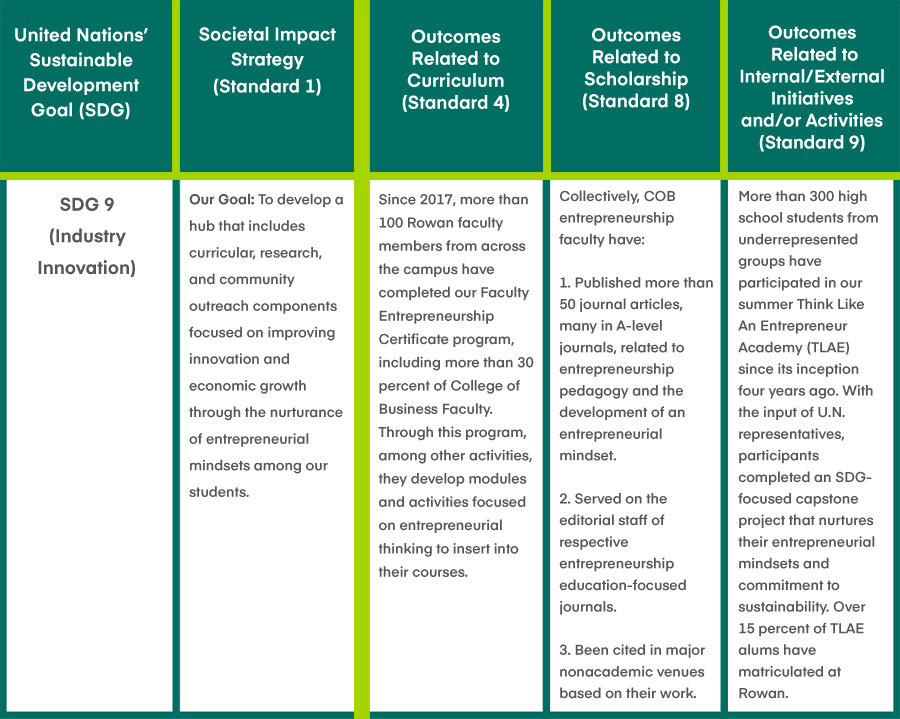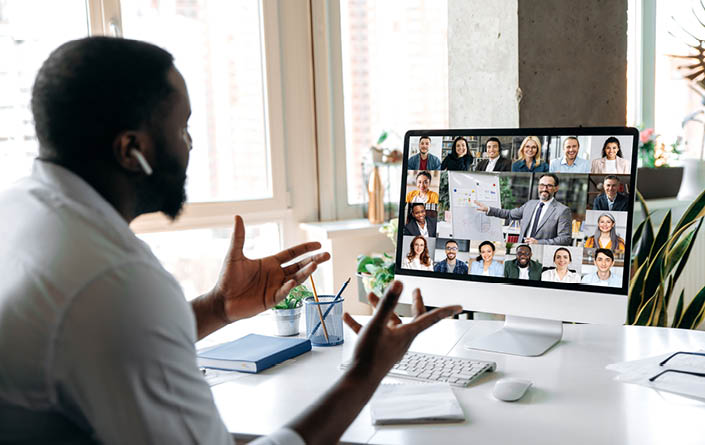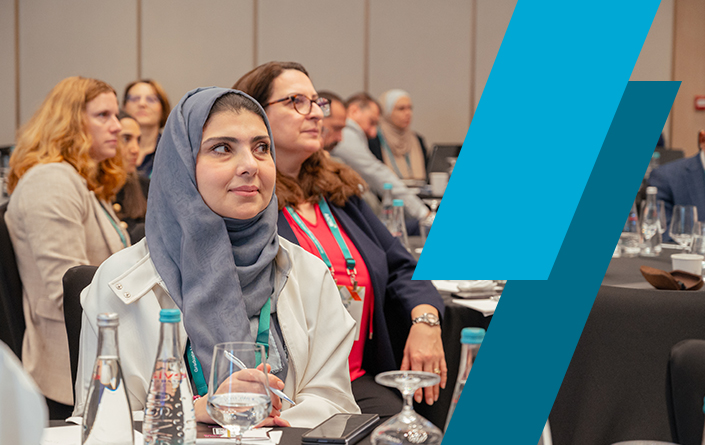Where Thought Leadership Meets Societal Impact
Two concepts embedded in the 2020 AACSB business accreditation standards have elicited both excitement and anxiety among business school deans going through the continuous improvement review process: thought leadership and societal impact. Adding to their apprehension is the fact that societal impact threads throughout all nine standards. For example, it must be:
- expressed in and supported by the mission and strategic plan (Standard 1.4).
- embedded in the curriculum (Standard 4.3).
- demonstrated through internal and external initiatives consistent with the school’s “mission, strategies, and expected outcomes” (Standard 9.1).
The concepts of thought leadership and societal impact converge in Standard 8. There, it states that thought leadership is a condition that exists “when a business school is recognized as a highly respected authority in an area or areas of expertise and thus sought after by relevant stakeholders.” Moreover, a school’s intellectual contributions should “contain exemplars of research and publications that have a positive societal impact that is consistent with the school’s mission and strategic plan.”
Next week, I will be speaking on this topic at AACSB’s Global Accreditation Conference with my co-presenter, William Harvey. Harvey tackles the idea of thought leadership directly in a January 2021 article in the Journal of Knowledge Management. He and his three co-authors write that, in an era of “fake news,” business schools “have a vital role to play in providing evidence-based insights through our teaching, engagement, and impact activities.”
They further assert that schools have an imperative to assure that “those insights are actionable and provide valuable solutions for stakeholders.” This idea reinforces Standard 9, where it states that “societal impact refers to how a school makes a positive impact on the betterment of society, as identified in the school’s mission and strategic plan. Societal impact can be at a local, regional, national, or international level.”
The development of areas of thought leadership, including those focused on societal impact, is indeed a weighty responsibility for business schools. However, in keeping with the principles-based, flexible philosophy of the new standards, Standard 8 includes the vitally important caveat that thought leadership and societal impact can develop over time, in ways consistent with each school’s unique mission.
With schools still transitioning from the old standards to the new, these are comforting stipulations. But the question remains: How to begin?
One School’s Journey of Thought Leadership and Societal Impact
The accreditation process begins with the mission statement or, if necessary, a revision of that statement. In 2015, when I first became dean of the Rowan University Rohrer College of Business in Glassboro, New Jersey, we discovered, like many schools do, that our own statement needed a refresh. It abounded with worthy platitudes, but some didn’t ring true. Others needed an infusion of energy and resources to make them “real.”
So, we began a reassessment process, in which we first solicited crowdsourced input from over 200 stakeholders. Their input helped us sort out several key areas. For example, they helped us determine areas where we truly shone (such as project-based learning) and where revitalization was needed (such as responsible leadership). They also revealed emerging passions among stakeholders that we might have overlooked (such as entrepreneurial mindsets and diversity and inclusion).
After we created a draft of our new mission statement, we set out to assess if and how it could provide actionable and viable solutions for stakeholders. At this stage, we turned to smaller focus groups, which included critical external constituents, to help us further hone the wording into what is now our revised mission statement:
We empower a diverse population of students to achieve sustainable careers with a focus on real-world immersion, entrepreneurial thinking, and responsible leadership, supported by relevant faculty research and excellence in teaching.
With our new mission statement in hand, we convened a steering committee to begin a formal strategic planning process that would help us develop, actualize, and breathe life into each key concept articulated in the mission. This included the formation of two task forces to tackle the convergence of thought leadership and societal impact articulated in Standard 8. One task force is dedicated to entrepreneurship and entrepreneurial mindset; the other is focused on promoting responsible leadership, which includes topics related to sustainability, social responsibility, and business ethics.
A Creative Use of Resources
Over the last five years, these two task forces have evolved into full-fledged centers of excellence. These include a Center for Innovation and Entrepreneurship, which the school relaunched in 2017 after several years in decline, and a Center for Responsible Leadership that opened in 2019. Expanding on the work initially done by the task forces, these centers are explicitly charged with creating projects that link thought leadership and societal impact, developing associated curricula and co-curricula, providing relevant teacher training opportunities, and executing external stakeholder engagement activities.
Modest resources assist in achieving these outcomes, including funds that we use to incentivize targeted areas of thought leadership with societal impact components. While the centers are at different stages of maturity, both are moving in the right direction to achieve goals related to Standard 8.
There have been two keys to our centers’ success: We have identified and assigned faculty and staff champions, and we have strategically used our precious staff openings to strengthen our chosen focal areas.
There have been two keys to our centers’ success. First, we have identified and assigned faculty and staff champions to oversee the work of each center. And, second, we have strategically used our precious staff openings to strengthen our chosen focal areas—such as hiring a consumer behaviorist who has an additional interest in green marketing.
But given limited resources, we sometimes have needed to get creative. For example, in the early days of the Center for Innovation and Entrepreneurship, we temporarily hired an entrepreneur to launch our efforts. Eventually, we were able to replace that individual with a tenure-track executive director. I also negotiated a courtesy appointment of a faculty member from another college to lead our new Center for Responsible Leadership. This individual now works half-time for the College of Business; next year, he will become full-time.
Using the SDG Framework as a Guide
To drive coherency and synergy throughout our centers, task forces, and the Rohrer College of Business as a whole, we are focusing our energies on pursuing a subset of the 17 United Nations’ Sustainable Development Goals (SDGs). We will use AACSB’s Optional Table 9.1 to help link our progress toward the SDGs with the four 2020 AACSB standards that address societal impact. This includes Standard 8, which has an additional thought leadership component.
Below is an excerpt from our version of Table 9.1, which relates specifically to the Rohrer College’s work toward SDG 9. Other topical areas we plan to address in the table include entrepreneurship and poverty alleviation (SDG 1), sustainable investing (SDG 8), and gender equality (SDG 5):

Advice to Those Just Getting Started
When I chair the peer review team (PRT) for a school newly coming up under the 2020 standards later this year, I will not be looking for perfection. Instead, the PRT and I will be looking for indicators that the school is beginning to work steadily toward setting and achieving its mission-specific goals related to thought leadership and societal impact. Below, I offer advice from my own experiences that might be helpful to this school, as well as any others in the early stages of this process:
Start with an honest review of your mission. If necessary, revise your mission statement to make sure its emphasis is on actionable and viable solutions for your key stakeholders.
Create a structure that will allow you to systematically tackle each part of your plan, which might include the formation of communities of practice, task forces, and centers of excellence. Understand that this structure can grow and change incrementally over time.
Peer review teams look for indicators that schools are beginning to work steadily toward setting and achieving mission-specific goals related to thought leadership and societal impact.
Identify champions for each significant area of thought leadership and societal impact in your school. Be creative if you need to be, considering individuals outside of your school or even your university. Use every faculty or staff vacancy as an opportunity to strengthen your areas of focus.
Develop a clear strategy for mapping your actions to external stakeholder needs, documenting plan outcomes, and telling a compelling mission-driven story. The SDGs provide a helpful framework; AACSB Optional Table 9.1 also will help you achieve all three of these objectives.
Most of all, enjoy the process! Our school’s journey resulted in a revitalized mission focused on entrepreneurial thinking and responsible leadership—your school’s journey will likely take you down a different path, based on your own community’s strengths and passions.
No matter where it leads, the pursuit of thought leadership and societal impact can help energize and benefit your faculty, staff, students, and external stakeholders. At the same time, it will help your school contribute to AACSB’s vision “to transform business education globally for positive societal impact.”





